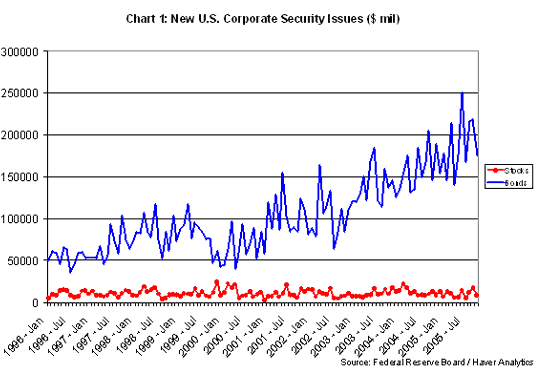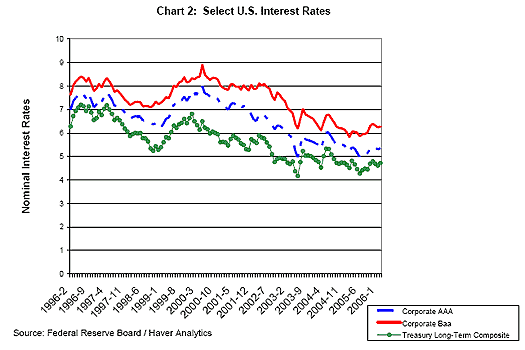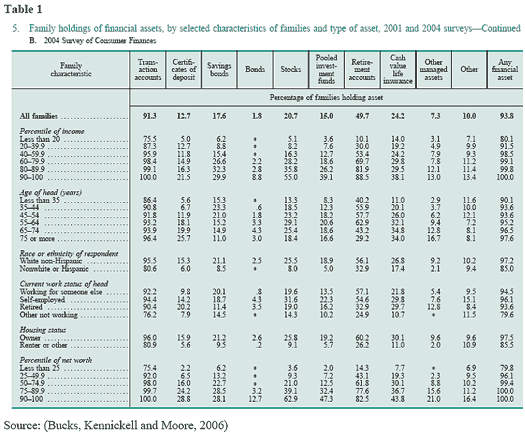First, some definitions
The debt market is the market where debt instruments are traded. Debt instruments are assets that require a fixed payment to the holder, usually with interest. Examples of debt instruments include bonds (government or corporate) and mortgages.
The equity market (often referred to as the stock market) is the market for trading equity instruments. Stocks are securities that are a claim on the earnings and assets of a corporation (Mishkin 1998). An example of an equity instrument would be common stock shares, such as those traded on the New York Stock Exchange.
How are debt instruments different from equity instruments?
There are important differences between stocks and bonds. Let me highlight several of them:
- Equity financing allows a company to acquire funds (often for investment) without incurring debt. On the other hand, issuing a bond does increase the debt burden of the bond issuer because contractual interest payments must be paid— unlike dividends, they cannot be reduced or suspended.
- Those who purchase equity instruments (stocks) gain ownership of the business whose shares they hold (in other words, they gain the right to vote on the issues important to the firm). In addition, equity holders have claims on the future earnings of the firm.
In contrast, bondholders do not gain ownership in the business or have any claims to the future profits of the borrower. The borrower’s only obligation is to repay the loan with interest.
- Bonds are considered to be less risky investments for at least two reasons. First, bond market returns are less volatile than stock market returns. Second, should the company run into trouble, bondholders are paid first, before other expenses are paid. Shareholders are less likely to receive any compensation in this scenario.
How large are these markets?
It seems that the average person is much more aware of the equity (stock) market than of the debt market. Yet, the debt market is the much larger of the two. For example, in September 2005 (the most recent data available at the time this answer was written), about $218 billion of new corporate bonds were issued, as compared to slightly under $18 billion in new corporate stocks. Chart 1 compares new issues of corporate bonds and corporate stocks in the United States for the past ten years.

Another way to compare the size of the two markets is to think about total amounts of debt and equity instruments outstanding at the end of a particular period. According to “Flow of Funds” data of March 2006, published by the Board of Governors of the Federal Reserve System for the fourth quarter of 2005, there was approximately $34,818 billion in outstanding debt instruments and about $18,199 billion in outstanding corporate equities. Thus, the size of the debt market as of the last quarter of 2005 was about twice that of the equity market.
Why are these markets important?
Both markets are of central importance to economic activity. The bond market is vital for economic activity because it is the market where interest rates are determined. Interest rates are important on a personal level, because they guide our decisions to save and to finance major purchases (such as houses, cars, and appliances, to give a few examples). From a macroeconomic standpoint, interest rates have an impact on consumer spending and on business investment.
Chart 2 below shows interest rates on select bonds with different risk properties for the last 10 years. The chart compares interest rates on corporate AAA bonds (highest quality bonds) and Baa bonds (medium-quality bonds) and long-term Treasury bonds (considered to be risk-free interest rate).

The stock market is equally important for economic activity because it affects both investment spending and consumer spending decisions. The price of shares determines the amount of funds that a firm can raise by selling newly issued stock. That, in turn, will determine the amount of capital goods this firm can acquire and, ultimately, the volume of the firm’s production.
Another aspect to consider is the fact that many U.S. households hold their wealth in financial assets (see Table 1 below). According the data from “Survey of Consumer Finances” published by the Federal Reserve System, in 2004, 1.8% of U.S. households held bonds (down from 3% in 2001), and 20.7% of U.S. households held stocks (down from 21.3% in 2001). Table 1 shows financial asset ownership data for 2004. In addition to this direct ownership of stocks and bonds, it’s important to remember that there are households who hold these instruments indirectly—in retirement accounts, for instance (more than half of U.S. households held retirement accounts in 2001). Poor performance of equity and debt markets reduces wealth of households who hold stocks and bonds. This, in turn, reduces their spending (via the wealth effect), slowing down the economy.
For a further discussion of financial markets and their importance, please see Ask Dr. Econ, January 2005.

References (as of April 2006)
Bucks, Brian, Kennickell, Arthur and Kevin B. Moore. 2006. “Recent Changes in U.S. Family Finances: Evidence from the 2001 and 2004 Survey of Consumer Finances.”
“Flow of Funds Accounts of the United States.” March 9, 2006. Board of Governors of the Federal Reserve System.
Mishkin, Frederic and Stanley Eakins. 2000. “Financial Markets and Institutions.” Reading, MA: Addison-Wesley Publishers.
“The Federal Reserve System: Purposes and Functions.” 2005. Board of Governors of the Federal Reserve System.
Mishkin, Frederic. 1998. “The Economics of Money, Banking, and Financial Markets,” 5th ed. Reading, MA: Addison-Wesley Publishers.